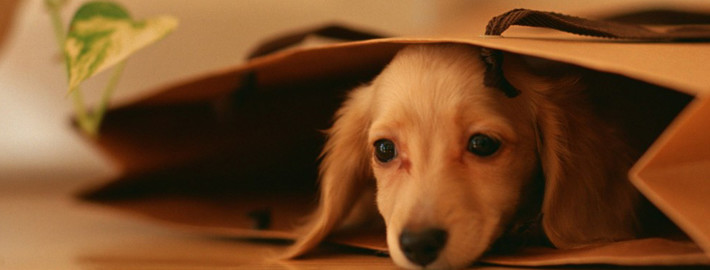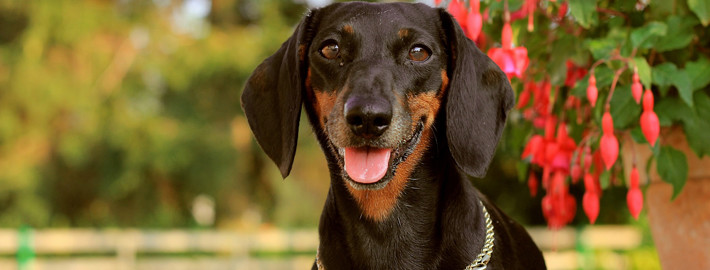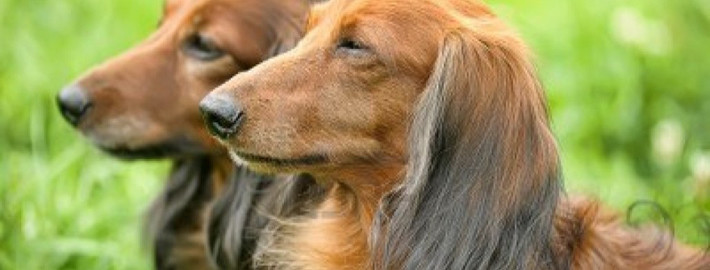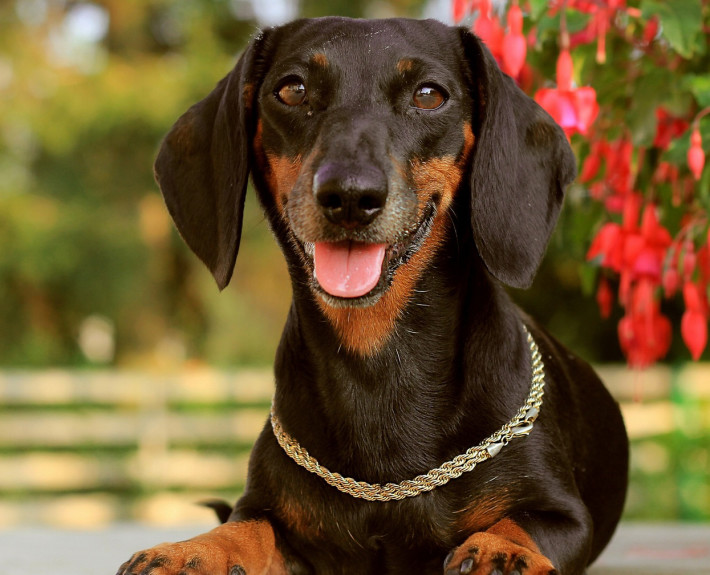What makes the Dachshund Unique?
These lively dogs are sure to brighten up anyone’s day with their antics. Although they are small of stature, they are big on personality. Dachshunds are fierce, affectionate, and clever creatures that make good family pets.
Breed Groups
Page Contents
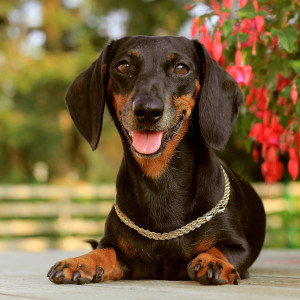
SnapShot
| Size: | Males – 20 to 27 cm (8 to 11 inches) Females – 20 to 27 cm (8 to 11 inches) |
| Weight: | Males – 7.3 to 15 kg (16 to 32 lb) Females – 7.3 to 15 kg (16 to 32 lb) |
| Origin: | Germany |
| Life Span: | 14 – 17 Years |
| Colour: | Chocolate & Cream, Red, Black & Tan, Blue, Cream, Tan,Black, Chocolate |
| Litter Size: | 4 to 8 puppies |
Is the Dachshund Right For You?
Dachshunds are fierce, affectionate, and clever creatures that make good family pets. These fearless dogs are also incredibly clever and independent minded. They tend to bond strongly with one person in their families and follow them about the house. While these dogs enjoy playing with their owners, they easily get sidetracked. These dogs are very affectionate. They like to snuggle and have their stomachs rubbed.
Dachshunds are a stubborn breed that was bred to think independent so that they could hunt on their own. They are also notoriously hard to housebreak. Even when this is accomplished, the dogs sometimes will fail to live up to their owner’s expectations.
In 5 Words
- Lively
- Playful
- Devoted
- Clever
- Stubborn
Characteristics
Learn About the Dachshund
Description
General Description
Dachshunds have long, sturdy bodies and stocky, shortened legs. They also have large paws, which were used for digging their typical prey out of its burrows. Their wide chests help improve their lung capacity, a feature that is especially useful underground. Flexible skin is another advantage these dogs have because it doesn’t snag when they squeeze through narrow burrows. Long hanging ears are another feature of these dogs. Members of this breed have long, dark colored noses and a keen sense of smell to match. Dachshunds should have an alert expression in their dark, almond-shaped eyes. They also have curved tails that are in line with their spines.
Size
Standard size male Dachshunds are between 8 and 11 inches (20 and 27 centimeters) in height. The females are smaller at 5 to 7 inches (13 to 18 centimeters) tall. They weigh between 8 and 11 pounds (3.6 and 5 kilograms), while the males weigh 16 to 32 pounds (7.3 to 15 kilograms).
Coat
Dachshunds can have smooth, long, or wire-haired coats. These dogs also come in many different patterns including piebald, dapple, and double dapples. Members of this breed can be solid red or cream. However, most Dachshunds are bicolored. These usually have tan or cream colored markings at various points and are otherwise grey, fawn, black, chocolate, and red.
Short History of the Dachshund
About four centuries ago, the Germans developed a hunting dog that would become the modern Dachshund. The breed was specifically designed for hunting badgers by flushing these creatures out of their dens and cornering them. These dogs were also quite capable of tackling other forms of small game such as hare and foxes. In packs, regular sized Dachshunds could even manage to bring down wild boars. Selective breeding was used in the following centuries to produce the shortened legs that are a common feature on modern Dachshunds.
By the 1840s, this breed had attracted the attention of royalty. Windsor Castle was home to several dachshunds who regularly participated in hunting excursions with the palace’s inhabitants. In 1881, the Dachshund Club of England was created. The Germans themselves founded their own club seven years later, paving the way for a breed standard to be developed. American Dachshund enthusiasts started their own club in 1895. To this day, Dachshunds remain popular in the States but are more often found serving as companions rather than hunters.
Temperament
These fearless dogs are also incredibly clever and independent minded. They tend to bond strongly with one person in their families and follow them about the house. While these dogs enjoy playing with their owners, they easily get sidetracked. These dogs are very affectionate. They like to snuggle and have their stomachs rubbed. Tunneling through blankets is one hallmark trait of this breed. These dogs also like to dig and can put ankle-twisting holes in a landscape with great ease.
Dachshunds may not like strangers but they nonetheless make great watchdog dogs. However, other dogs of the same gender can sometimes cause problems because they tend to have domination issues. Dachshunds also gravitate towards other members of their breed. However, they typically get along with other small breeds and will accept cats if they are brought up around them. Most standard-size Dachshunds are fine with children but some may snap at those who play too roughly.
Caring for Your Dachshund
General Health
Intervertebral disc disease is a major concern for dachshunds. This means owners have to keep a sharp eye out for back injuries in their dogs. Dachshunds should never be picked up from around their middles. Obesity is another problem as these dogs enjoy eating but becoming overweight can exacerbate or cause other ailments to occur. Additional health problems noted in this breed include epilepsy, seizures, progressive retinal atrophy, mammary tumors, gastric torsion, bloat, hypothyroidism, Acanthosis nigricans, Cushing’s disease and canine diabetes. Deafness occasionally occurs in double dapple dachshunds.
Care
Daily
These dogs need some exercise every day, even it is only a quick dash around a fenced-in backyard. Members of this breed also enjoy being walked with the other dogs in their household if there are any.
Weekly
Brushing a dog’s teeth on a regular basis can prevent both bad breath and the onset of periodontal disease.
Monthly
Heartworm, flea, and tick prevention medication is a must for all dogs. These preventatives are generally given on a monthly basis. It’s recommended that owners bathe their Dachshunds about once a month.
Grooming & Bathing
Generally speaking, Dachshunds are a low maintenance breed. It is a good idea to brush the long and wire-haired varieties regularly to keep their fur from becoming tangled or matted. The smooth haired types can be wiped down with a damp towel as needed to keep fur from getting everywhere.
Exercise & Training
Dachshunds are a stubborn breed that was bred to think independent so that they could hunt on their own. They are also notoriously hard to housebreak. Even when this is accomplished, the dogs sometimes will fail to live up to their owner’s expectations. Accidents are not uncommon. Therefore, owners will need to have patience when training these dogs.
It is best to begin training any dog as a puppy but adult dogs can also learn basic commands. Dachshunds benefit most from short, interesting training sessions that take place multiple times per day. They are motivated by treats but owners should take care not to let them have too many goodies because obesity is another major concern for this breed.
Owners should be further aware that Dachshunds are prone to biting in general, because they were bred to hunt and don’t understand why they shouldn’t sink their teeth into something. Jealously and excessive barking can also become problematic with this breed. In addition, these dogs should not be allowed to roam around off their leashes in unfenced areas because they will wander off at the first hint of an interesting smell.

